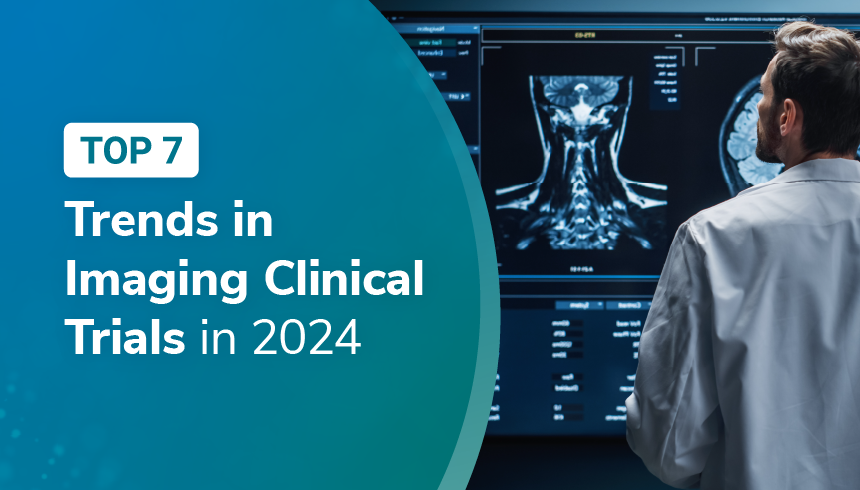Digital Twins
Since it was first proposed for NASA’s Apollo program, the concept of the digital twin has evolved. In its simplest terms, a digital twin is a copy of a biological entity. In practical terms, this is conceived in projects such as the EU-funded The Virtual Brain for brain network simulations, or the Digital Twin Brain for intelligence research drawn from group-wise features, but few have yet come so close as to create replicas at the individual level.
Individualized digital twins could completely transform the clinical trial space. There’s the broader application of mimicking diseases to screen potential drugs and streamline the drug development process. But there’s also the possibility of combining multimodal imaging and multi-omics data to predict patient responsiveness before and during a trial. With a digital twin, a patient can belong to both treatment and placebo groups, so to speak. Several ongoing trials (ClinicalTrials.gov) are aimed at the rigorous testing and validation of this evolving technology to inform the development of much-needed regulatory oversight. Will 2024 be the year that digital twins show us their worth?
Further reading:
Decentralized Trials
Decentralized clinical trials (DCTs) are a new approach to conducting clinical research that allows participants to receive treatment and provide data remotely, rather than having to visit a central study site. This can be especially beneficial for trials that involve large, dispersed populations or for individuals who may have difficulty traveling to a study site due to geographic, financial, or other barriers. Another brainchild of the pandemic, DCTs are made possible by advances in technology such as telemedicine, electronic data capture, and wearable devices, which allow for remote monitoring and data collection.
One key advantage of DCTs is that they have the potential to increase access to clinical trials for a wider range of people, which is key to an optimal recruitment process and is especially important in rare disease trials. DCTs can also reduce costs for sponsors and research sites, as they eliminate the need for physical visits to study sites. May et al.’s 2020 questionnaire identified a number of scans (> 3) or scan duration (> 60 mins), time off work, and cost and time of travel as some of the most consistent barriers to participation in a trial. A remote or hybrid trial completely transforms the patient experience. However, there are also challenges to conducting DCTs, such as ensuring data quality and security, and finding ways to effectively engage and support remote participants. Despite these challenges, DCTs have the potential to significantly impact the way that clinical trials are conducted and could galvanize the development of more effective treatments for a wide range of conditions.
Further reading:
Integration of Wearables
Wearable technology has the potential to significantly impact clinical trials by providing continuous, real-time data on participants' health and behavior. This can provide a more comprehensive and accurate picture of the effectiveness of a treatment being tested. Wearables can also reduce the burden on participants by allowing them to self- or automatically report data, greatly facilitating the implementation of DCTs. The market for wearable medical devices is forecasted to grow at a compound annual growth rate of 15% from USD 100 billion in 2023 up until the year 2030. However, there are challenges to the integration of wearables into clinical trials, such as ensuring data accuracy outside of controlled environments and addressing privacy and data security concerns. Overall, the integration of wearables into clinical trials has the potential to revolutionize research and lead to the development of more effective treatments..
Further reading:
AI and Staying Ahead of the Technological Curve
A lasting legacy of the pandemic, the clinical research industry is no stranger to rapid innovation. In recent years, artificial intelligence (AI), especially generative AI, has developed at an unprecedented rate. While innovation is key to success, this also presents a unique challenge for study design. If trials can take several years to complete, how can sponsors keep pace to ensure technologies do not become outdated by the time a study closes? One way is by staying ahead of the curve. Breadth and depth of investment in the digital realm should remain a top priority for biopharma companies if they are to facilitate the translation of advanced technologies into impactful trial use cases, such as AI for endpoint optimization. And for all the studies that completed before such technologies emerged, AI could help to find even more value through retrospective data analyses.
Further reading:
Best Practices in Central Reading
Central reading of imaging data according to standardized guidelines is a key step in determining clinical trial subject eligibility and serial response assessment, and so the read design is an important consideration for study coordinators. When deciding on the number and type of readers, coordinators are usually looking to minimize one thing: variability. 2023 saw several deep dives into how imaging trials can look to refine review practices and maximize the validity of result data. Iannessi and Beaumont found a high degree of variability in double reads at baseline in lung cancer trials with blinded independent central review. To decrease discrepancies, they suggest tracking each reader’s specific pattern of assessment and subsequent pairing optimization. Herzog et al argued that investigator-assessed review is not necessarily superior to blinded review; both have their respective advantages. The discordance rate between them can be improved from 39% to 12% by a simple training intervention and removal of reviewers with high reader variability. 2024 will see trial organizers further refine and put these recommendations into practice.
Further reading:
- Herzog TJ, Wahab SA, Mirza MR, et al. Optimizing disease progression assessment using blinded central independent review and comparing it with investigator assessment in the PRIMA/ENGOT-ov26/GOG-3012 trial: challenges and solutionsInternational Journal of Gynecologic Cancer 2023; 33:1733-1742.
- Iannessi, A., & Beaumont, H. (2023). Breaking down the RECIST 1.1 double read variability in lung trials: What do baseline assessments tell us?. Frontiers in oncology, 13, 988784.
Psychedelics
The 50-year hiatus from clinical research into psychedelic compounds came to an end in 2006 when a landmark John Hopkins University study revived a long-lost confidence in the safety and therapeutic potential of psilocybin and psychedelics more generally. Initial reports of their benefits in alcohol abuse, cancer-related anxiety, and depression have now evolved into a series of clinical trials focusing on anorexia nervosa, chronic pain, and other mental health disorders. These efforts are greatly sponsored by academic institutions, though there is increasing interest more recently from private organizations such as Clerkenwell Health, who are looking to fast-track the development of psychedelic drugs, many of which are still labeled ‘controlled substances’.
Imaging is set to play a pivotal role in this development process. In the study of compounds where subjective patient experiences are obvious and make blinding trials a near impossibility, objective biomarkers are crucial. fMRI and EEG studies of the brain under the influence of psychedelics reveal the disruption of large-scale functional networks. PET imaging with 5-HT2A agonist radioligands could help to elucidate long-term drug action at a molecular level, although such ligands are currently lacking. 2023 saw the industry move beyond pilot studies and into an accelerated pursuit for answers across hundreds of trials, with the FDA releasing new guidance in this respect. As MDMA edges ever closer to FDA approval as a PTSD treatment, will 2024 see us finally get to the bottom of these ‘hope or hype’ treatments?
Further reading:
End-to-end imaging solutions
As each of these trends improve trial accessibility, increase data volume and complicate data security, 2024 and beyond will see an increasing reliance on end-to-end solution providers to tie it all together. Trial sponsors will seek to cut costs by handing over the imaging arm to third parties such as QMENTA.This has the potential to ensure optimal site coordination, data harmonization and secure and efficient image analysis, all with the objective to extract as much as possible of the rich information that imaging data has to offer.

